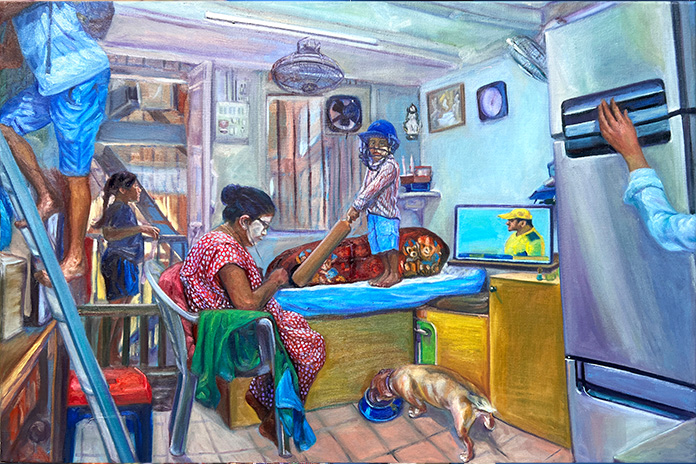The devil and the delight lurk in the details of Rajesh Kargutkar’s art.
The Mumbai-born artist spent his formative years in the cramped quarters of the chawls — the dense tenement complexes that provided low-cost housing to the migrant workers drawn to the bright lights of opportunity provided by industrialisation.
Rajesh’s father worked in the port, and the family, including some members of the extended family, lived together in the one-room unit.
While many would zero in on the negatives in this scene — the lack of privacy, the potential for discord, the dangers of diseases spreading due to close proximity, among others — Rajesh opted to showcase the positive attributes being in such a close-knit community afforded.
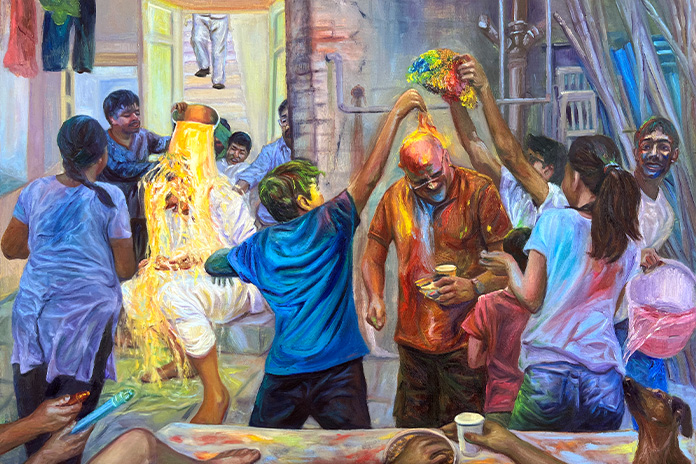
Look For The Positives
Rajesh would rather focus his artistic messages on the positives that he could draw upon for inspiration.
“People complain about many things. They raise problems. But if we keep doing that, who’s going to offer the solutions?” he asks.
“When you talk about cramped spaces, you hear about poverty, that you don’t have enough, that you will not progress,” the artist reflects.
“But these are the places that taught me resilience, to be persuasive and how to maximise a situation with limited resources.
“That is all brain training. And here lies the opportunity,” Rajesh insists.
“As a kid, I got this opportunity to learn everything because of the limitations. We learned dance, practised cricket, all in this cramped space.
“I wanted to present that. Both sides of the coin — the good things and how we can preserve them, and how we can progress and be happier.”
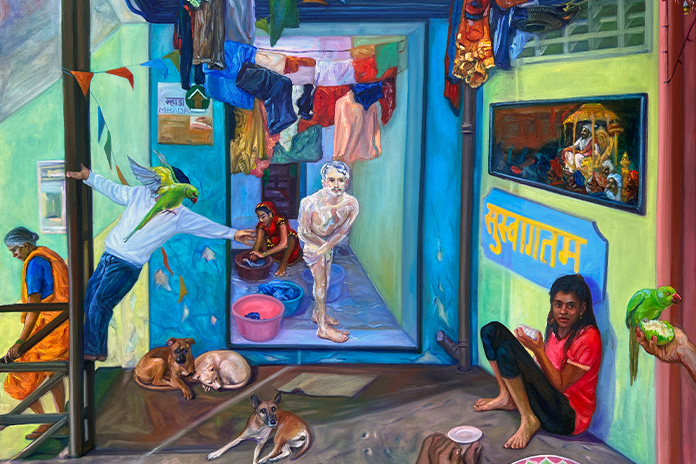
End Of An Era
The chawls are destined to be knocked down, to make way for better housing, especially given the escalating land value in Mumbai, a city surrounded by water on three fronts. The eventual exit of chawls will mark the end of rich and poor living within reach of each other. It will sweep away an important aspect of the city’s history in the onward march towards progress.
Rajesh’s paintings will offer that glimpse into history for future generations who may want to understand how their city’s transformation has been undertaken over the centuries.
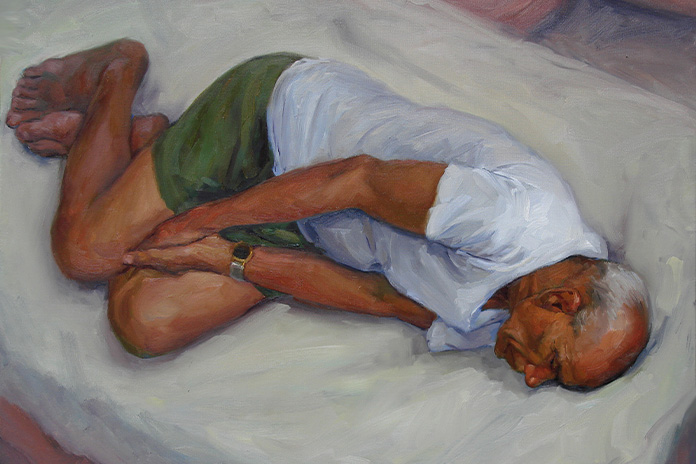
Keeping An Open Mind
Rajesh has been very focused on not being overly focused on any particular style of art.
“I do not prefer any style because I feel that style is created to sell,” Rajesh reasons.
When artists produce more of a certain style of work, that becomes his or her identity. Rajesh doesn’t want to be a machine, churning out work to be sold.
Having been trained in a variety of art mediums, Rajesh would rather go with what inspires him.
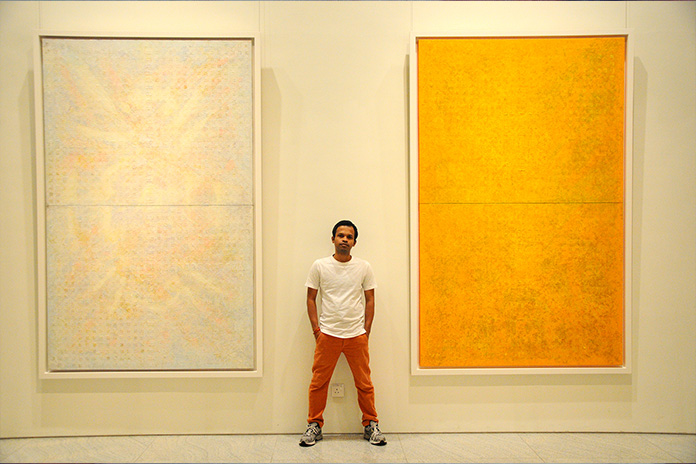
Cramped Spaces
Chong Huai Seng, the Founder of The Culture Story, who is organising the exhibition of Rajesh’s work, was drawn to the versatility of the artist and his body of work.
“A lot of artists these days, who become well known for a certain type of art, will produce it forever and ever and ever,” Chong says.
“Sometimes, they are a victim of their own success because collectors only buy a certain type of painting because that artist is famous for, let’s say, dots.
“And people don’t want anything else but please, can you paint more dots?”
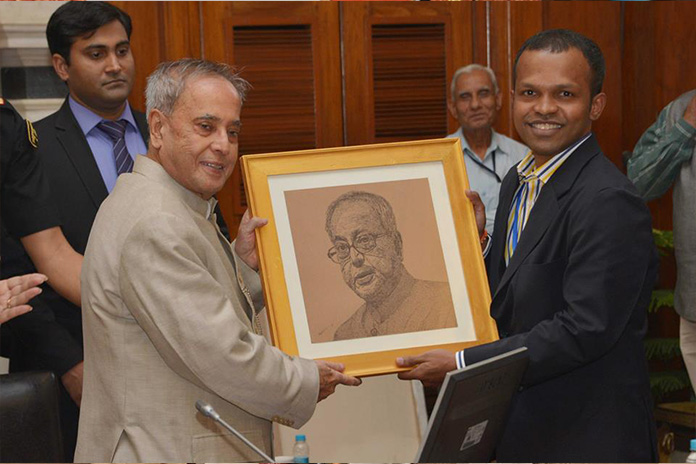
Sharing His Knowledge
Rajesh, who lectures in an international school in Geneva, Switzerland, has been lauded for his work.
In 2015, he was invited by the President of India to join in the prestigious Artist-In-Residence Programme at Rashtrapati Bhavan.
At school, Rajesh showed promise in his studies. With his high marks in maths those around him thought he would become a chartered accountant. His father, who dreamed of becoming a doctor, hoped his son would fulfil his ambition and take up the stethoscope.
But Rajesh only had art on his mind, and his abilities and the novel approach to his eventual vocation of choice would see him flourish as an artist.
Cramped Spaces will be exhibited until 4 October 2024 at The Culture Story (www.theculturestory.co). Viewing by appointment only. There will be an open house on 3 August 2024.
